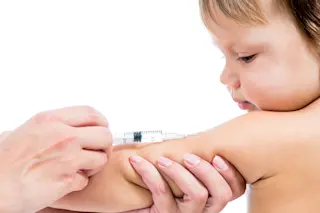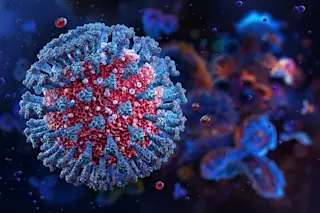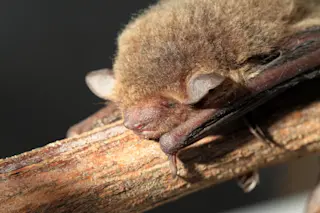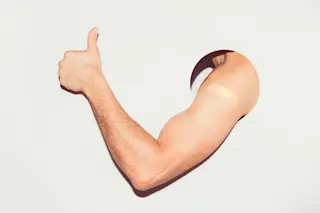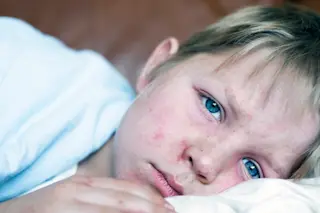NOVA, “Vaccines — Calling the Shots”
9 p.m. EDT Sept. 10, PBS (check local listings)
In the opening scenes of NOVA’s new “Vaccines — Calling the Shots,” young mothers in a California park express concern that the vaccine schedule recommended for their children seems like too many injections in too short a timespan. Another young mother, thousands of miles away in Australia, worries that unvaccinated children are putting her son at risk: The boy has a rare genetic mutation that makes vaccinating him dangerous. Instead he must rely on herd immunity — the collective protection from many diseases that only results when 95 percent of the population is vaccinated — to prevent potentially deadly infections.
Examining emotions that fuel vaccination fears, University of Michigan researcher Brian Zikmund-Fisher looks calmly at the camera and says: “Is it OK to question? Of course it is.”
In the debate over vaccinations, parents’ genuine concerns — and scientists’ answers — are too often drowned out by extremists on both sides of the divide: “anti-vaxxers,” who believe the shots cause everything from autism to sexual promiscuity, and staunchly pro-vaccination voices who attack anyone not in lock-step with them.
“No one is willing to have a conversation with you,” laments one of the mothers in the Bay Area park.
The special, premiering Sept. 10 on PBS at 9 p.m. EDT (check local listings), steps back from the cacophony to have that much-needed conversation. An American update of the 2013 Australian documentary “Jabbed — Love, Fear and Vaccines,” “Calling the Shots” strips away the drama, misinformation and name-calling that mire serious discussion of what has become a public health crisis in the developing world.
About 10 percent of parents in the U.S. alone choose to skip or delay recommended vaccinations for their children, and 1 percent don’t vaccinate at all. The percentages are higher in some areas, particularly in affluent communities. Reasons for not vaccinating vary from one family to the next, but the effect is societal. Diseases once seen only in medical textbooks are now showing up in doctors’ offices, sometimes in droves, as with a 2013 measles outbreak in New York that spread through a largely unvaccinated Brooklyn neighborhood.
“Calling the Shots” executive producer Michael Rosenfeld and writer/producer/director Sonya Pemberton, who was also behind the original Australian version, discussed with Discover senior associate editor Gemma Tarlach why they made the documentary and how they hope it will get people talking — and listening.
Discover: How was this project different from previous health-related documentaries you’ve done?
Sonya Pemberton: This has been the most challenging and complex film of my career. Not only does it require cinematic storytelling and rigorous attention to scientific detail — as does every science documentary — but the subject is a potential flash point for debate, and even anger. The task I set for myself was to follow the science, and yet try to be true to the experience of those with concerns and questions.
Michael Rosenfeld: This film came with some unusual challenges because the topic of vaccines is an emotional one for many parents. We wanted to cut through the public confusion to give people a clear picture of how vaccines work and why they play such an important role in public health. And we wanted the film to be illuminating both for the majority who vaccinate their kids on the recommended schedule and for the minority who may delay or consider not vaccinating at all. I think we managed to pull that off.
Why is 2014 the right time to make this documentary?
MR: You only have to read the newspapers or look online to know that vaccination is a subject of major concern right now. Vaccine-preventable diseases are cropping up in communities where vaccination rates have dropped below the level where herd immunity holds. To me, that comes home early in the film when a pediatrician in New York expresses his astonishment at seeing cases of measles — he’d never seen a single case until an outbreak in his community. At the same time, states such as California are beginning to tighten up the rules on personal exemptions from vaccine requirements. So vaccination is clearly on the minds of doctors, public health officials and all those parents who will be sending their kids back to school in September.
The film is also timely from a scientific point of view. For example, the idea that vaccines are linked to autism has been widely discredited, which is something we discuss. But now there’s new science that’s beginning to reveal the genetic causes of autism. This research traces autism to mutations that affect the wiring of the developing brain. In covering that side of the story we had a chance to give people a richer understanding and shed light on one of the greatest misunderstandings about vaccines.
SP:In 2014, you can find many, many parents who have questions and concerns about vaccines, and many will say they are not being heard. These concerns are real, and in some communities they are on the increase. Many are not opposed to vaccines, but they are asking questions.
I believe we need to try to have a new style of conversation, one that avoids the clichés and the anger.
Did you go into the project with a specific target audience of parents in mind?
MR: We were hoping to reach parents with young children, both those who vaccinate routinely and those who may harbor some doubts. Some of those parents turn off if they think they’re being lectured to, so we tried to craft a film that is frank, informative and accessible.
SP: In writing and directing the film I’m aiming at people who have questions and concerns about vaccination, a group sometimes described as “vaccine hesitant.” These people are not “vaccine refusers” but they may delay or skip some vaccines, some of the time. Or they may simply want to ask questions and express their fears. The key is that they genuinely want to have a conversation and they are open to listening to the answers science can provide.
At several points in the program, researchers and pediatricians say some variation of "it's OK to question vaccines," or that they could understand why parents would worry. Was it a conscious decision on your part to seek out these kinds of measured, moderate comments?
MR: You’re exactly right; we deliberately tried to avoid the way this issue has often been framed, as a virtual war between forces for and against vaccination. The fact is, that’s a pretty misleading perspective. Most Americans vaccinate their kids on schedule, and those who don’t are in the minority. And, of course all, parents fundamentally want the same thing — for their children to be safe. We tried to show that reality and to avoid denigrating anyone.
The researchers and doctors we interviewed all hold the strong conviction that the evidence shows vaccines to be safe, effective and necessary. Some of them have seen children die in outbreaks and they never want to see that again. At the same time, many of them are trying hard to find a way to get through to parents who are afraid of vaccinating. They recognize that fear of vaccines can be a natural anxiety, but they want to help people move past their fears.
Do you feel there are voices in the pro-vaccination camp that are too strident and actually causing people wary of vaccinations to dig in their heels about it?
MR:
Communicating about vaccines is extremely challenging, even for people who try hard not to be dismissive of concerns that parents have. There’s a recent study published in the journal Pediatrics that tested four strategies commonly used to communicate about vaccines. The study found that none of these approaches improved people’s intention to vaccinate. So there’s a recognition among doctors and officials now that they need to identify better ways of communicating about vaccines.
SP: I no longer see it as a two-sided argument. Some researchers describe a spectrum of opinions regarding vaccines, from the unquestioning acceptor, to the questioning acceptor, through to the hesitant folks — those that delay or skip a few — right through to the very small group that opposes all vaccines. The idea of this “immunization spectrum” was of great interest to me. I believe that the supposed polarity surrounding vaccines is not particularly helpful. Setting people up as either “pro-vax” or “anti-vax” means we all retreat to our bunkers. And it’s often an inaccurate description, a false polarity — we are all people trying to make the best decisions we can.
It’s also worth remembering that the vast majority of people do vaccinate — for very good and sensible reasons! We must celebrate this fact.
The program traces the history of vaccination, starting in India more than 1,000 years ago. One thing that really stands out in this segment is how ignorance and fear work together, such as public panic in the 19^th century that a cowpox-derived smallpox vaccine could turn you into a cow. How can we as a society overcome the devils of fear and ignorance?
SP: Both those who are in favor of vaccination and those who are against vaccination can be motivated by fear — fear of disease (wanting protection) and fear of possible side effects (also wanting protection from these). We talk about fear explicitly and openly in this film, and that's one of the most important elements of the documentary. Acknowledging fear is one of the fundamental ways we process fear and overcome it.
MR: I think we do often fear what we don’t understand, and we also find it hard to sort out the different sources of information that bombard us. In the Internet age, rumors can circulate and go viral so quickly, whether they have a grain of truth or not. As Brian Zikmund-Fisher says in the film, stories about children being injured have the power to grab our attention, and people can be quick to believe that vaccines are to blame.
Science education and science media can be highly effective antidotes if done well. Where documentaries are concerned, the key is to tell compelling stories and find effective ways to explain complicated ideas. For example, in our film we took Brian, who studies risk, to a football game where he used the stadium as a metaphor to show how extremely rare vaccine-related injuries really are. You’d need 10 stadiums, each with 100,000 people, to find a single serious allergic reaction to the Hepatitis B vaccine. It’s a simple illustration, but because you can visualize it, you suddenly get it.
“Calling the Shots” suggests that the “immunization spectrum” breaks down as 10 percent of people strongly in favor of vaccinating, 10 percent strongly opposed and 80 percent somewhere in between. Do you feel that the 10 percent in strong opposition are essentially a lost cause who are, no pun intended, immune to scientific evidence in favor of vaccinations?
MR: I don’t think anyone is ever completely a lost cause, because it is always possible that new information, new evidence or a new way of presenting it might turn their thinking around. But with this film, we did decide to focus on the middle 80 percent. We felt that group would be most receptive to the message of the film —that it’s natural to worry about risks, but the benefits of vaccinating far outweigh them, and the risks of not vaccinating are now catching up to us.
What was the most challenging part of making the documentary?
MR: I’d say that getting the tone and the balance just right was the hardest thing. Doing justice to the science, being sympathetic to the parents and telling some highly personal stories without making the film too emotional — keeping all of that in balance was the hardest thing.
SP: The most challenging part for me was trying to see things from the perspective of someone who sees vaccines as something to be feared. To try to really understand the concerns, to listen and to try to “get” what it is like to be in their position. That was hard.
What kind of reaction to “Calling the Shots” are you expecting?
SP: My hope, and the hope of our team, is that this film can perhaps help start a new style of conversation around vaccination. That people who might usually argue, might instead discuss. The film does not and cannot answer every question. But it can open a door to talking about what the questions — and answers — may be.
[This is an extended version of the article that originally appeared in print titled "Take Your Best Shot."]


